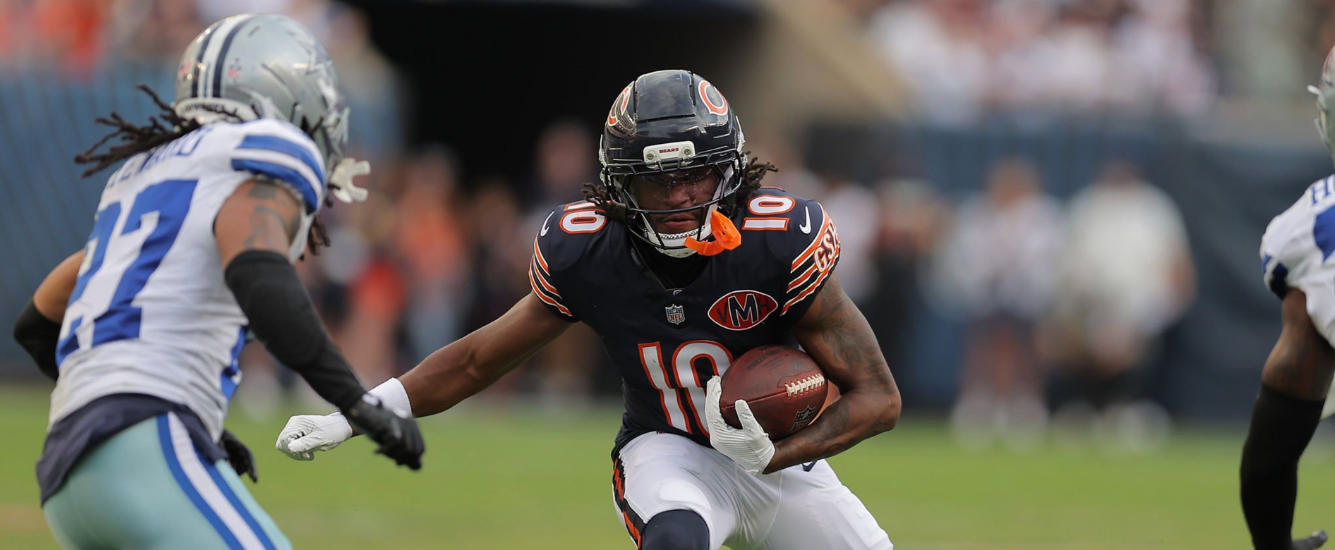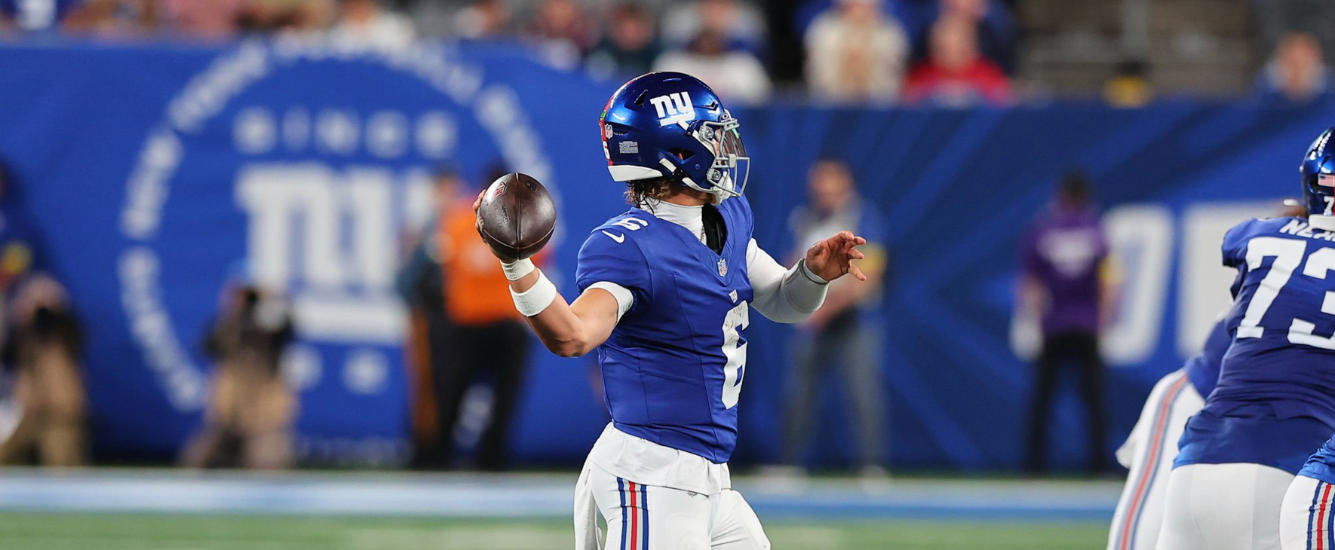With one week left in the 2020 fantasy season, Shawn Siegele looks at several “perfect draft” scenarios and explains how they fit with the broader research on building a champion in 2021 and beyond.
It’s been a dream season for the RotoViz team as our player picks and draft strategies have dominated leagues. It’s also good to be a little lucky. This season I’ve co-owned four Main Event and two FPC teams with other members of the RV community. Four of those teams made the playoffs, and a fifth missed when it lost its Week 13 league championship.
That’s when it got really exciting. During the first two weeks of the Race for the $500,000, those teams have averaged 188, 181, 166, and 184 points. As a result, they rank 27, 34, 108, and 39 in their respective contests with a few more teams likely to pass us tonight.
Although none of those teams are likely to win the 500k, they’ve demonstrated the sustained excellence and peaking-at-the-right-time dominance that we’re looking for in our lineups. In regular playoff leagues, these scores would have you cruising into the finals.
What can we learn from our lineups, and how closely do they correspond to the Perfect Draft?
Perfect Draft from Different Draft Slots
We’ll start the exercise by looking at the perfect draft from each slot section independently. Early in the draft owners have access to very different players and have to draft accordingly.
Once we get out of the early rounds, the number of impact players shrinks and the availability of key players extends over a greater range of picks. We’ll move to a single Perfect Draft at that point.
| Round | Draft Slot | ||
|---|---|---|---|
| 1 to 4 | 5 to 8 | 9 to 12 | |
| 1 | Alvin Kamara | Cook/Henry | Kelce/Adams |
| 2 | DeAndre Hopkins | Aaron Jones | Tyreek Hill |
| 3 | Jonathan Taylor | Allen Robinson | Chris Carson |
| 4 | Darren Waller | A.J. Brown | Calvin Ridley |
| 5 | D.K. Metcalf | Keenan Allen | David Montgomery |
Quick Takeaways
- With an early or middle slot, the Round 1 RB approach is vindicated. There were a lot of land mines, including each of the top-three picks and six overall, which explains why RB win rates at the very top haven’t been as good as you might think.[1]These are the FFPC best ball numbers from 2017 to 2019. The top overall pick has had a below average win rate, and drafting an RB in the first round with a top-4 slot has only increased win rate over average in one of four slots. Since Christian McCaffrey has a 2.5% win rate entering Week 15, we can expect this number to fall further.
 Still, the right RBs set their teams up with high-scoring anchors.
Still, the right RBs set their teams up with high-scoring anchors. - Prior to the season, we encouraged you not to chase the points and to use a WR-WR start if you had a slot in the final third. The numbers were very clear that this was the winning strategy, and this approach has paid off in a big way in 2020. Davante Adams and Tyreek Hill exploded to scoring levels that were almost identical to Alvin Kamara and Dalvin Cook.
- The RB Dead Zone is alive and well. Aaron Jones, David Montgomery, Chris Carson, Nick Chubb, and Austin Ekeler were the only RBs between Rounds 2 and 6 to average more than 16 PPG. Due to missed games, only Jones and Montgomery are over 200 total points.[2]Jones, Montgomery, and Carson all find their way into perfect draft scenarios. By contrast, in this ADP range 13 WRs averaged 16-plus points and 11 of them are also over 200 points. It’s never been more important to win the race to fill the flex.
Round 1
2020 has been such a fun fantasy season because of the balanced and multiple methods to win. The first round provided a 20-plus scorer at all three flex-eligible positions, and at least one 25-plus scorer was available to owners with middle and late slots. Kamara (23), Cook (25), Adams (25), Travis Kelce (21), and Derrick Henry (21) all offered elite scoring.
Round 2
I went into more depth on Hill and DeAndre Hopkins in The RB Dead Zone and Why It Will Help You Keep Your Championship Window Always Open. Since that time, Hill hit a historic score in Week 12 and Hopkins climbed back toward the scoring level from his overall WR1 finishes in 2017 and 2018.
Meanwhile, Jones remains the overlooked superstar at RB. He hits a couple of key criteria for executing an RB-heavy start.
Round 3
Round 3 turned into a “reach” round in 2020. James Conner and Todd Gurley disappointed as the first two RBs off the board, and injuries limited the TEs and WRs. Even the hits are weaker than those we can find in Rounds 4 and 5, but a few options did impress.
After an offseason of fawning over generational prospect Jonathan Taylor, his RB10 status is almost a mild disappointment. Almost. He’s emerged when owners needed it the most. Only Henry and Montgomery have averaged more than his 22 PPG over the last five weeks.
Chris Carson is a controversial choice with overall scoring so far below the star receivers in this range, but his 20 PPG over the first five weeks provided the all-important fast start. He’s also rallied to offer 15.4 PPG during the last month, a time period that corresponds to the FFPC playoffs and 500k chase. He gives our WR-WR squad key RB balance for drafters who don’t wish to employ Zero RB. Carson joins Aaron Jones as key values located by our Range of Outcomes tool. (The historical sim scores provided in the app are a main reason Dalvin Cook was my most-owned player.)
Round 4
Sam Wallace wanted you to buy high on Calvin Ridley last March, and there’s no price he hasn’t justified with his 2020 performance. The Atlanta star is averaging 19.5 PPG despite a Week 4 zero. After a mini-swoon from Weeks 9 to 13, he’s rebounded to score 58.7 over the last two, a number that trails only Henry during the fantasy playoffs. (This isn’t as unique as you might think.)
He wasn’t available to all owners with a middle slot, so we’ll go with big-play machine A.J. Brown. His target share and air yards profiles don’t stand out, but unparalleled run-after-catch ability has given him 141 fantasy points over expectation since the start of 2019, better even than Hill (128).
Darren Waller’s secondary breakout illustrates a central plank in the Best Ball Workshop: you must select a TE in the first four rounds. His win rate of 16.6% will jump again once the Week 15 numbers are included.

Round 5
D.K. Metcalf, Keenan Allen, and David Montgomery exploded to league-winning results in different segments of the campaign. During the bombs away portion of the Seahawks season,[3]Weeks 1 through 9 Metcalf averaged 21 PPG as the overall WR2. He became my top-ranked dynasty WR as a result. Allen offered a veteran contrast. With Justin Herbert taking over in Week 2, Allen averaged 10.5 targets per game, a number trumped only by Stefon Diggs.
No player has authored a bigger turnaround than Montgomery. Joining Ship Chasing before Week 13, I mentioned him as a player I’d like to own for the fantasy playoffs. That was met with well-deserved skepticism, and it was only three weeks ago. He’s scored 27 PPG since.
I’ve always doubted Montgomery’s talent, but his price has offered a couple of pivotal buying windows. Before the season, I argued for Montgomery as a discount play on Josh Jacobs’ opportunity. Over the last month, that play has paid off in a huge way. Fortunately for RotoViz readers, the Buy Low Machine told you exactly when to jump in. Montgomery was my key unfashionable buy at mid-season, and he’s been the ultimate playoff hammer for owners in all formats.
Rounds 6 through 18
Footnotes[+]Footnotes[−]
| ↑1 | These are the FFPC best ball numbers from 2017 to 2019. The top overall pick has had a below average win rate, and drafting an RB in the first round with a top-4 slot has only increased win rate over average in one of four slots. Since Christian McCaffrey has a 2.5% win rate entering Week 15, we can expect this number to fall further. |
|---|---|
| ↑2 | Jones, Montgomery, and Carson all find their way into perfect draft scenarios. |
| ↑3 | Weeks 1 through 9 |


















